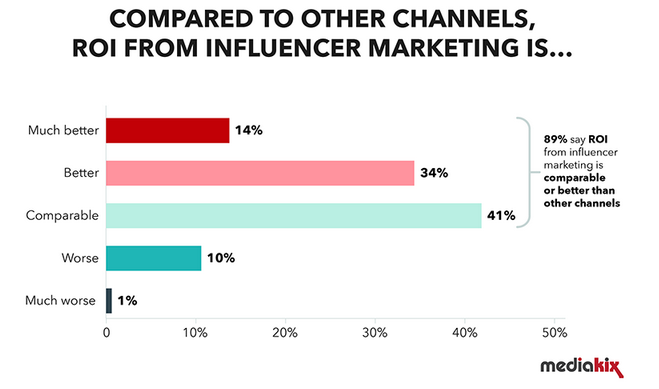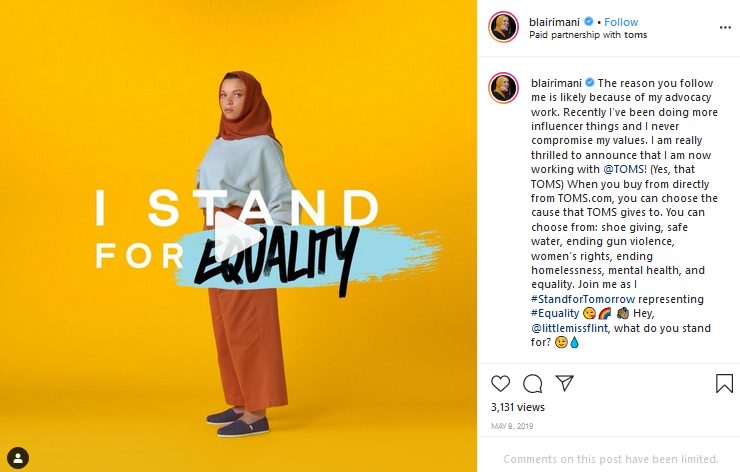Did you know that 63% of people trust what influencers say about brands more than what brands advertise themselves?
It’s evident that brands can win over their audiences by working with influencers. They can boost their reputation, get more social proof, and subsequently boost their sales. If you want to grow your business, you need to leverage influencer marketing.
Still on the fence?
Many marketers are skeptical of this strategy as there are many misconceptions about influencer marketing.
In this article, let’s take a look at the common myths regarding influencer collaborations.
Which Are The Most Common Myths Surrounding Influencer Marketing?
Along with discussing the misconceptions, we’ll also look at why they are not true. Ready to bust influencer marketing myths?
Let’s get started.
Myth #1: All Influencers Have Fake Followers
Agreed, influencer fraud is one of the biggest issues that brands face with influencer marketing. That’s because many influencers purchase fake followers to inflate their follower counts. Because of such influencers, the entire industry seems to receive a bad reputation.
However, there are many genuine influencers out there as well who have put in a lot of effort into building their fan base. The trick to avoiding fraud is to invest some time in research before you collaborate with an influencer.
Here’s a trick to check the authenticity of followers:
Compare an influencer’s follower count with the engagement they get on their posts. If the number of likes and comments is very few compared to the number of followers they have, something is off.
Alternatively, you can also leverage advanced platforms for influencer marketing to make sure you’re working with genuine influencers only. Some of these platforms also provide influencer reports that show the total fake follower count for each influencer profile.
With these platforms, it becomes easy to find accounts that may show suspicious behavior. Additionally, you can get more information about the influencer’s audience, including demographics, interests, and more.
Myth #2: Influencer Marketing Is Expensive
Influencer marketing is often perceived as a strategy meant only for big brands with huge budgets. But that’s far from reality. The beauty of influencer marketing is that it has something to offer to everyone.
Whether you’ve got only a few hundred dollars to spare or a big fat budget, you can leverage influencer marketing.
Here’s how:
In addition to high-tier influencers and celebrities, the industry also has micro- and nano-influencers. The latter category may not have huge followings but they typically have a good engagement rate.
If you want to get started with a small budget, it’s a good idea to team up with micro- or nano-influencers in your niche.
There are no set benchmarks on the pricing for any campaign. The final pricing will largely depend on your negotiation skills, what you offer, and the kind of work you are expecting.
What’s more, 89% marketers say that the ROI from influencer marketing is comparable or even better than other marketing methods.

All in all, you can tailor your campaign based on your budget. Even with a small budget, you can expect a great ROI.
Myth #3: Influencer Marketing Is Mainly For B2C Brands
Many marketers believe that influencer marketing is for those who sell products that are visually appealing or cater directly to consumers. However, the fact is that everyone can leverage influencer marketing to grow their brands.
You can collaborate with influencers on multiple platforms, including LinkedIn, Pinterest, Instagram, YouTube, and others. From publishing promotional posts and running Instagram giveaways to writing reviews, and making educational videos, there are multiple ways to promote your products with the help of influencers.
The key for brands is to piggyback on an influencer’s reputation. By associating with influencers, you can boost your authority and reach out to your target audience.
If you sell a B2B software solution, you could team up with a technology influencer who can help you create a tutorial video. This way, you can increase your brand awareness and show your audience what your product can do.
You can even leverage influencer marketing to support a social cause you believe in. Take a leaf from Microsoft’s influencer marketing campaign.
They partnered with National Geographic and women adventurers for their #MakeWhatsNext campaign. Through this campaign, they wanted to encourage more women to participate in STEM.

Myth #4: Influencer Marketing Is Time-Consuming
If we take into consideration the entire duration of creating content and publishing content, then it’s definitely time consuming. But influencers do most of the heavy lifting for you. They are in charge of conceptualizing the campaign, creating it, and publishing it.
From the perspective of a brand, the majority of the time needs to be spent on finding the right influencer. You need to check an influencer’s background and ensure that they are the right fit for your audience. In addition to this, you also need to check their audience and see if their content is relevant for you.
Once you have vetted the influencer and chosen the right one to work with, you can take a step back.
All you need to do is convey your requirements to the influencer. After that, content creation is their job. After the campaign, you need to analyze their performance and check your campaign’s ROI.
If you are really tight on time, you can also work with an influencer marketing agency. They’ll handle most of the work for you.
Myth #5: Influencers Just Care About The Money That They Get
For influencers, social media is their bread and butter. They work hard to create a reputation for themselves and establish genuine bonds with their audience. Even when they are not publishing sponsored content or promoting a brand, influencers are creating engaging content.
For them, posting content on social media is all about building a rapport with their audience. They want to share what they believe in and what they are doing. Establishing relatability with their audience is crucial to find success as an influencer.
Before a collaboration, genuine influencers size up a brand to check if they are the right fit for their audiences. Money is definitely a motivating factor but values and ethics are also important for some influencers.
Take the example of Instagram influencer, Blair Imami. She identifies as a bisexual black Muslim woman. For her, advocating for LGBTQ rights is very important.
When asked about her collaborations in an interview, she clearly stated that values were important for her.
“I could not be content with my conscience if I worked with a company that, for example, didn’t even hire LGBTQ+ people or didn’t donate money back to the community they claimed to care about. I hold myself to a high standard and I want to see other influencers follow suit,” she said.
In the screenshot below, you can see how she collaborated with Toms to promote equality. As a part of the campaign, Toms pledged to donate some part of their revenue to social causes.

Conclusion
Influencer marketing has many advantages to offer. Make sure you don’t miss the opportunity to leverage it because of any misconceptions that you may have about it. Now that we’ve busted some myths for you, it’s time to dive in.
Did we miss any other common influencer marketing myths that you’d like us to address? Please mention them in the comments section.
About the Author

Shane Barker is a digital marketing consultant for 15 years with an emphasis on Influencer Marketing in the last 5 years. He specializes in sales funnels, targeted traffic and website conversions. He has consulted with Fortune 500 companies, Influencers with digital products, and a number of A-List celebrities.

